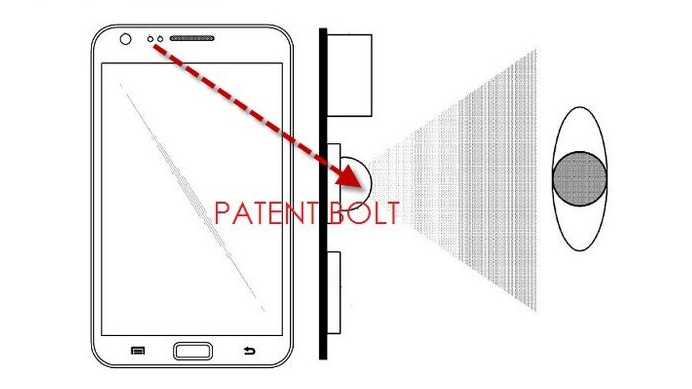Will the Galaxy S5 REALLY have an eye scanner?
Surely not...

We first heard rumours a month ago that the Samsung Galaxy S5 might have an eye scanner, but back then that's all it was, a rumour.
Now there's some actual evidence in support of it, as a Samsung patent detailing such a technology has been uncovered by Patent Bolt.
The patent includes a number of diagrams which show a smartphone with an iris sensing unit and a proximity sensor. The sensor would presumably activate the iris sensor when an object approached and if that object is an eye it would then be scanned.
The obvious use for this would be as a security mechanism which could potentially one-up Apple's Touch ID fingerprint sensor.
Keep your eyes on the prize
It makes sense that Samsung would want to do that. The real question is whether it will make it into the Samsung Galaxy S5 or whether we'll have to wait a little longer to see it.
Actually, the real question is: who would hold their phone up to their eye to unlock it? The potential embarrassment would rival the shame of trying to get your phone to do anything with your voice, your peers laughter ringing in your ears as it just starts a timer for 15 minutes.
Retinal scanning would be a headline feature worthy of a flagship device, but with the Galaxy S5 potentially arriving as soon as January it might miss out on Samsung's fancy new security feature.
Sign up for breaking news, reviews, opinion, top tech deals, and more.
If all the rumours about the Samsung Galaxy S5 pan out then it could be a phone to be reckoned with, as there's also talk that it might have a 560ppi screen, a 64 bit chip and a metal frame.
- After more Samsung Galaxy S5 news? Here's what we know so far.
James is a freelance phones, tablets and wearables writer and sub-editor at TechRadar. He has a love for everything ‘smart’, from watches to lights, and can often be found arguing with AI assistants or drowning in the latest apps. James also contributes to 3G.co.uk, 4G.co.uk and 5G.co.uk and has written for T3, Digital Camera World, Clarity Media and others, with work on the web, in print and on TV.